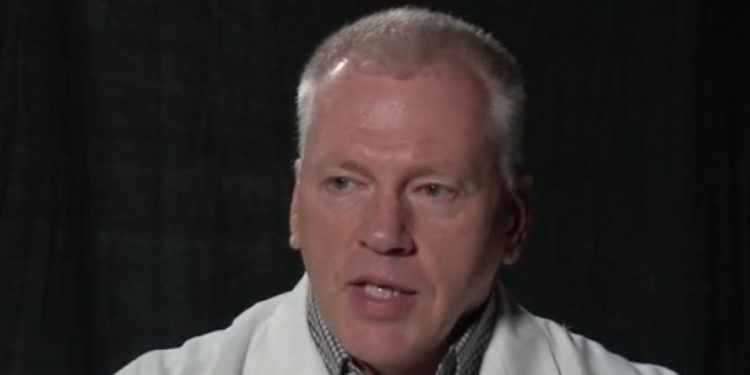AUSTIN (KXAN) — Doctors and researchers are working to better understand the novel coronavirus that’s become a global pandemic. Since we’re in relatively uncharted territory, KXAN anchor Sydney Benter asked the Chief of Emergency Medicine at Dell Seton Medical Center at UT, Christopher Ziebell, to clear up some of our questions.
SB: “Your doctors and your nurses — how are they protecting themselves?”
Dr. Ziebell: “When we are doing things where we might have some risk, we are putting on personal protective equipment. At this time, we have a reasonable supply of that personal protective equipment. We’re taking steps to try and conserve that supply. So, we don’t have a big fear of that in this community at this time. I know some people in other parts of the country are having some pretty significant shortages. I can’t promise we won’t have that at this time–that we won’t be one of those—so, we’re being frugal with how we use the equipment, but we are using it to protect ourselves.”
SB: “Is the guidance that you’re hearing [that] young people can still be affected by this, perhaps be asymptomatic, but they can still be affected by the virus?”
Dr. Ziebell: “The percentage of patients who are under the age of 50 who still wind up in the ICU, seems to be higher in the United States than it has been in Europe or Asia in the communities that have been hit so far. The solid message is being young makes you less at risk, it does not make you immune.”
Symptoms
Dr. Ziebell: “I think if people are congested in their nose and not having a fever, and not having the body aches and that sort of stuff, it probably is allergies. And if it’s moving on down into the chest and they are getting a fever with it, it is more likely to be infectious; just all the more reason to lay low and keep away from other people.”
Prevention
“Recognize that things in public are going to get contaminated, and so what you want to do there is as soon as you get home, wash your hands; or even as you are leaving use alcohol–based hand gel.”
SB: “People are probably wondering, surfaces that sort of germ sticks on longer?”
Dr. Ziebell: “So, we can find the germ on plastic surfaces three days after it is deposited there. Is that enough germ that it has the potential to infect somebody and cause disease? We don’t know the answer to that. Stainless steel: seems like about a day, from what I’ve read. If I have packages delivered from Amazon, what’s the risk in that? It seems like cardboard is three hours.”
“It’s almost three times more contagious than the flu.”
Christopher Ziebell
Dr. Ziebell: “Everyone who gets this germ, on average, passes its to 2.7 other people. To compare that to the flu, the number for that is 1.2. It’s almost three times more contagious than the flu. So even if the 20-year-old doesn’t die [for example], they’ll infect three people and one of them may die from it.”
SB: “I’ve been thinking how impressive it is people are heeding the advice. Can you tell me the feedback that you’re getting from folks?”
Dr. Ziebell: “I feel very honored, as a member of the health care community, to see how Austin has responded. Because a lot of the social isolation is about saving lives . . . it is to protect the health care environment. That fact is not lost on me–that restaurant workers are going without to protect the healthcare industry, and bartenders are going without, and kids aren’t going to school and so on. I think the social isolation is not perfect at this point, but it’s actually a lot better than what I thought it was going to be when we announced a few days ago we need to stop going to bars and restaurants.”
“My hope is that six months from now, people can say, ‘That was blown way out of proportion,’ and I can smile inside and say that it really wasn’t blown out of proportion, but because of what we did, it felt like what we did was blown out of proportion. And this was the time to do the right thing, and a lot of people–the majority of people–did the right thing.”
Credit: Source link


